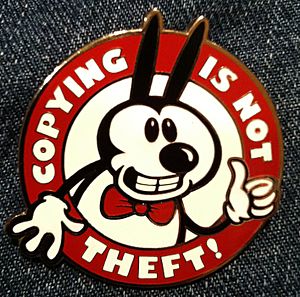Intellectual property facts for kids
Intellectual property (often called IP) is about owning your ideas or creations. It's a special type of law that gives people special rights to their unique creative work. This means no one else can copy or use that creation without the owner's permission.

IP can apply to many things, like music, books, art, new discoveries, and inventions. Common types of intellectual property rights include copyrights, trademarks, and patents.
The idea of "intellectual property" became common in the 1800s. But laws protecting ideas existed much earlier. For example, patent laws first appeared in England around 1623. Copyright laws, which protect books and art, started around 1710 with the Statute of Anne.
Most intellectual property laws exist to encourage progress. When creators know their ideas are protected, they are more likely to share their inventions and creations with everyone. It helps creators get the full benefit from their work, treating an idea like owning a physical item.
Contents
What is Intellectual Property?
Intellectual property is like owning something that isn't physical. Think of it as owning an idea, a design, or a special way of doing something. It gives the creator special control over their work. This means others need permission to use, copy, or sell it.
Why is IP Important?
IP laws help creators get credit and money for their hard work. Imagine if someone could just copy your favorite video game or song and sell it as their own. Without IP laws, creators might not bother making new things. These laws encourage people to be creative and invent new things. This helps society grow and develop.
Types of Intellectual Property
There are several main types of intellectual property. Each one protects a different kind of creation.
Copyrights
A copyright protects original artistic and literary works. This includes things like:
- Books and stories
- Songs and music
- Movies and TV shows
- Paintings and sculptures
- Computer programs
When you create something original, you usually get a copyright automatically. This means others cannot copy or perform your work without your permission.
Trademarks
A trademark is a special word, phrase, symbol, or design. It helps people identify the source of goods or services. Think of famous company logos or brand names.
- The Nike "swoosh" symbol
- The name "Coca-Cola"
- The golden arches of McDonald's
Trademarks stop other companies from using similar marks. This prevents confusion among customers. It also protects a company's reputation.
Patents
A patent protects new inventions. If you invent a new machine, a new process, or a new way to make something, you can apply for a patent. A patent gives the inventor the exclusive right to make, use, and sell their invention for a certain period. This means no one else can make or sell your invention without your permission.
History of Intellectual Property
The idea of protecting creations isn't new. Early laws focused on specific types of works.
Early Patent Laws
One of the first patent laws was the Statute of Monopolies in England in 1623. This law helped inventors protect their new creations. It was a way to encourage new inventions and industries.
Early Copyright Laws
The Statute of Anne was passed in England in 1710. This was one of the first copyright laws. It gave authors the right to control the copying of their books. This helped authors earn money from their writing. It also encouraged more people to write and publish.
Images for kids
-
The Statute of Anne became law in 1710. It was an important early copyright law.
See also
 In Spanish: Propiedad intelectual para niños
In Spanish: Propiedad intelectual para niños



